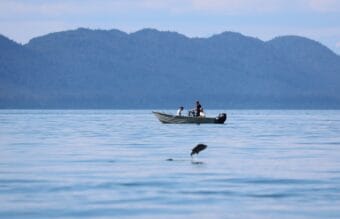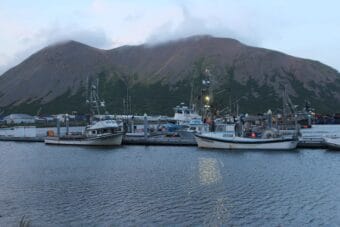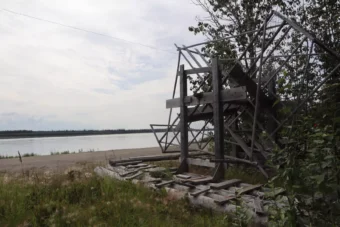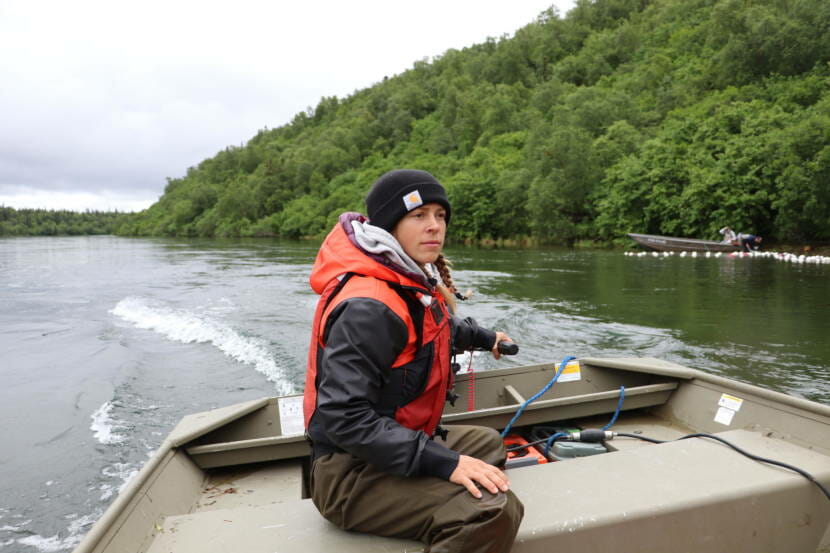
This summer, Sooz Green packed her bags to travel north from New Mexico to Bristol Bay, where she became one of three tower counters on the Wood River.
That means she tallied sockeye as they swam upriver to return to their spawning grounds during Bristol Bay’s largest salmon run on record.
The counts help biologists balance conservation and commercial fishing.
Each morning, Green’s day started with a six-minute skiff ride downriver. Then she climbed a four-story tower built from scaffolding.
“I climb up, I start the timer at the top of the hour on the right bank and I count for 10 minutes. Depending on how many fish there are, I might have two clickers,” she said.
After 10 minutes, she would record the total in her notebook.
Then she crossed the river to do the same thing at the second tower. All in all, it’s a lot of climbing.
“So I calculated, if you are climbing up just one during your count, that’s 16,” she said. “At least 16 times a shift up and down.”
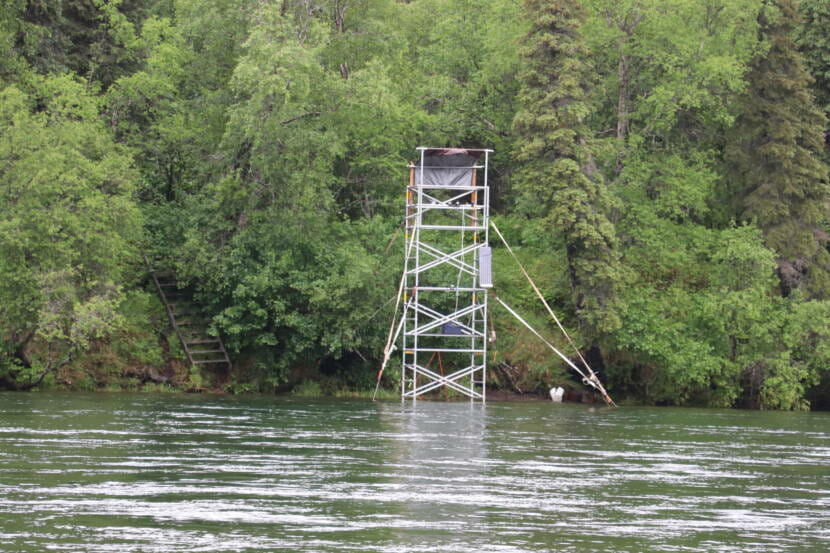
The Wood River site is one of nine counting stations around Bristol Bay. It has operated since the mid-1950s.
Tower counters like Green send their tallies to the Alaska Department of Fish and Game.
Their numbers inform area managers’ decisions about when to open and close commercial fishing, said Phil Stacey, Fish and Game fishery biologist and west side tower coordinator.
“We know how many are getting into the lake systems to spawn and that will allow us to manage the fishery more accurately because we only need a certain number of escapement to actually be sustainable,” Stacey said.
The Wood River counting tower is especially important in years when there are conservation concerns, he said. The Nushagak’s chinook run started slow this summer, and biologists waited for more than 150,000 sockeye to pass the tower until they let fishermen cast their nets.
For Green, the counting job fits perfectly with her transient lifestyle. When not counting fish in Alaska, Green lives out of a school bus in New Mexico, where she spends a lot of time rock climbing.
Between counts here, she passes the time with workouts. She has also had some tranquil moments.
“I have a couple of bald eagle friends who have been keeping a close eye on me,” she said. “There is a big moose cow and two calves. During my first shift, she was coming out around midnight.”
In addition to nature watching and staying active, Green assists with genetic sampling. Green said her time on the Wood River also made her realize just how important the job is.
“I feel really good about contributing to the system that we have in place and making sure this species doesn’t get overfished,” she said.
Green counted sockeye every day for six weeks this summer before hanging up her clicker on July 24, when the Wood River tower closed up shop for the season. She plans to return next year, with her counter in hand.

